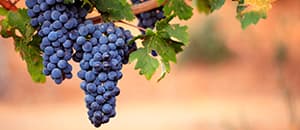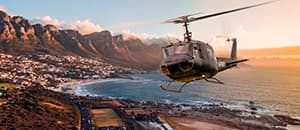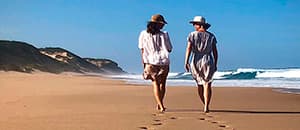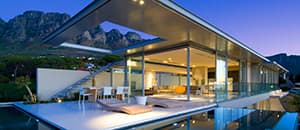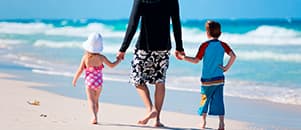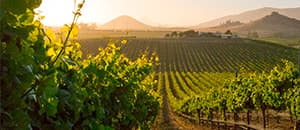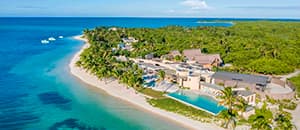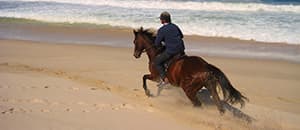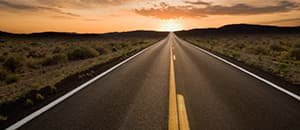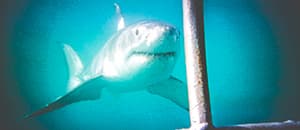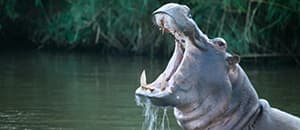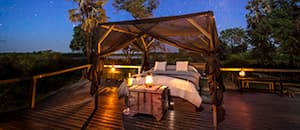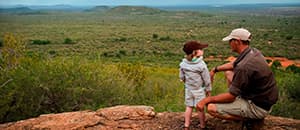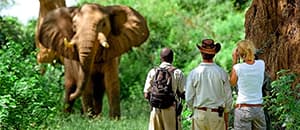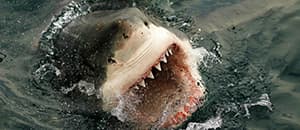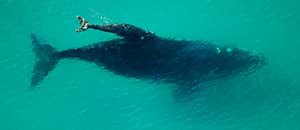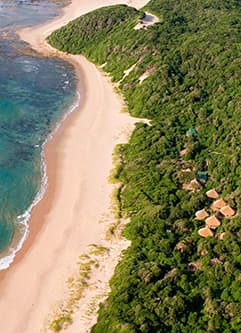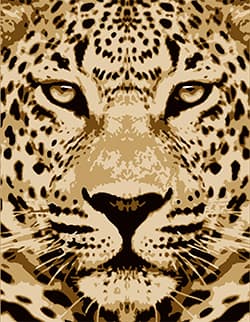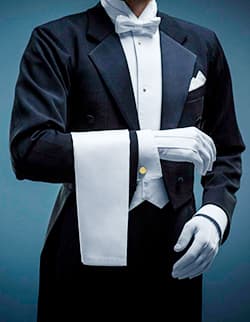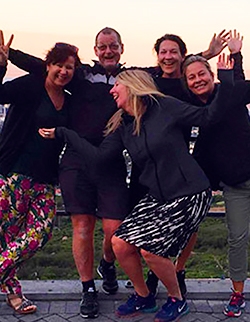Information about the Republic of South Africa as well as a historical summary
South Africa, with its population of approximately 63-million has a land size which is 5-times larger than Great Britain. Within the borders of this multi-faceted country lies unlimited nature, magnificent mountains, a vibrant culture, a lush wine district, endless farming land, an unlimited coastline, savannahs, desert and much more. South Africa offers experiences for everyone and a visit to the so-called rainbow nation, with its colourful people, provides wonderful travel memories. The country’s history has resulted in a fascinating melting pot of people originating from different histories and cultures. Influences come from the diverse African tribes of South and Southern Africa as well as Dutch, British, French and German colonial influences. South Africa is a country in constant flux faced with many complex social challenges that include unemployment, large economic differences between different population groups and crime. Notwithstanding these challenges, the “new South Africa” is one of the most inspiring and promising modern stories of our time and a country you simply have to visit.
Climate South Africa
South Africa has two main climate zones. During the summer (November to April) there will be some heavy rain, especially in the east and along the Indian Ocean. During this period, it is very hot and humid in these areas. During the same period, it is hot and dry around the Cape Province. During the winter months (May to October), the weather inland and on the east coast is sunny, dry and fairly mild. KwaZulu-Natal, on the Indian Ocean, has about 20–30 degrees, while in the mountains towards Lesotho it can be zero degrees. In the Cape Province it is then very cool and some rain occurs.
In Greater Kruger, the temperature in summer (November to December) is between 25–35 degrees and in winter (May to June) between 15–25 degrees. In May to September it is dry with a sparse and colorless vegetation. During the day it is sunny and pleasant, while in the evenings and early mornings (during game drive) it can get really chilly and crispy. It rarely rains. During October to March is rainy season with short showers in the afternoon. In summer, the landscape becomes lush and green, which makes the park lush and guarantees beautiful views. It is usually really hot and humid.
Best period to travel
Depending on what is of interest to you, it could be worth identifying the right season for specific experiences. The Whale season begins in June and ends in early December. The high season and especially the so-called “peak season” in December / January is very popular and requires early booking of accommodation, safaris, activities, restaurants and certain excursins well in advance. Lower prices for accommodation and other expenses are on offer during the low seasonin May to August. The best period, weather wise, when it is warm and more stable, is from February to April, the same period when some rain falls in Greater Kruger.
Destinations that are usullay included in Upplev Sydafrika’s different travel packages
Western Cape Province
Western Cape Province covers the southwestern parts of the country, at the Cape of Good Hope, and has coasts to both the Atlantic and the Indian Ocean. The capital is Cape Town. Other famous cities / areas in the Western Cape Province include the Cape Wine districts with Stellenbosch, Franschhoek and Paarl, the Cape Peninsula with the Cape of Good Hope, Cape Aghulhas – Africa’s southernmost point, Hermanus, the west coast and the Garden Route. The Western Cape Province was formed in 1994 by dividing the former Cape Province. The pleasant Mediterranean climate means that the summers (November to April) are usually sunny and warm with temporary thunderstorms. The hot days are “cooled down” by the colder breeze from the Atlantic. The average temperature in summer is 26 degrees. During the winter (May to October) it is cooler and it can rain a lot, followed by sunny pleasant days. Sometimes there are storms and strong winds. The average temperature in winter is 14 degrees. In the Western Cape Province you will find some of the country’s finest beaches. The water temperature is seldom over 17 degrees.
Cape Town
Cape Town has a population of approximately 4 million (including the suburbs), the country’s second largetst city, and is seen as one of the world’s most beautiful towns. It is easy to fall in love with South Africa’s best known town with its grand nature, beautiful coastline, white beaches and cloud covered mountains. Cape Town is the mecca of attractions which offers a large variation of fantastic experiences – something which suites all of us! The city is beautifully situated at the foot of Table Mountain, its most famous landmark. There are plenty of nice restaurants, bars, night clubs, shops, etc. and confortable accommodation at different standards and prices. Close to one of the world’s most beautiful cities – Cape Town, you will find the green and lush Constantia Winelands. An area with some of the oldest and most magnificent vineyards in the country.
Franschhoek
The town of Franschhoek (population approximately 17,000) – which in Afrikaans means the French hook – is well known for three quality things, you should be able to: eat well, drink well and sleep well. The city definitely lives up to its reputation, located in one of the world’s most beautiful wine valleys. For more than 300 years ago settled by the French Huguenots in the region, whose vineyards and food knowledge today has resulted in South Africa’s gastronomic capital. It was only when the French Huguenots arrived in South Africa, that the wine cultrue took off and with their knowledge they laid the foundation for today’s South African wine industry. Around the picturesque town you will find some of the absolute best vineyards in South Africa.
Stellenbosch
Stellenbosch (population approximately 98,000) with its Victorian and Dutch architecture and historic buildings stand out as a vibrant university town with many restaurants, bars, clubs and accommodation in different price categories. The area’s rich soil is essential for the production of fruits, vegetables and good wine. Surrounded by spectacular mountains, is the most famous wine region in South Africa and the climate make it ideal for wine production. Stellenbosch is the wine capital of South Africa who was first to establish a “wine route” 1971. This is where many of the country’s most popular wineries are located.
Paarl
Paarl (population approximately 130,000) takes its name from the huge granite outcrop that stands proudly on the crest of Paarl Mountain. The town was founded in 1687 and is the third oldest settlement in South Africa. It has a rich cultural and historical heritage. The birth of Afrikaans as the world’s youngest language is celebrated by the iconic Afrikaans Language Monument that stands prominently on the southern slopes of Paarl Mountain. Just outside Paarl is the Drakenstein Prison, where Nelson Mandela spent his last years of captivity and from which he completed his “long walk to freedom”. Paarl boasts true country hospitality, award winning wine farms and estates, and a plethora of accommodation to suit both your requirements and budget. Revel in beautiful fynbos-rich walks and hiking trails, cycle along superb mountain-biking trails or take a relaxing drive through the countryside to enjoy the spectacular scenery, followed by a leisurely lunch and fine wines from the region.
Hermanus
Hermanus has a population of approximately 70,000 and is situated around 120 km from Cape Town. The town and its grand nature is located in the beautiful area of Walker Bay which is surrounded by the ocean, beautiful mountains and miles of white beaches. Hermanus has become known as the “Whale Watching Capital of South Africa”. During the whale season, from june to the beginning of December, one can experience the Southern Right Whale the Humpback Whale and the Bryde’s Whale. East of the town you will find some of the most beautiful beaches in the world, including the 21 km long Grotto Beach. The town offers a large range of accommodation of different standards and prices. There are many nice restaurants and it is teeming with small fascinating boutiques, galleries, and a number of markets, all within walking distance. Visit the beautiful Hemel-en-Aarde Valley, one of the most southern wine districts in Africa, where several of the country’s top winemakers are located and developing their wines.
Paternoster
Along the west coast, approximately two hours from Cape Town, is the charming small old fishing village, Paternoster situated. The village, with its white washed fishermans cottages and the characteristic colorful blue and red painted wooden boats along the sandy beaches, has grown and become an increasingly popular destination in South Africa. Stroll along the long white beaches and have lunch at one of the charming fish- or gourmet restaurants. Visit galleries and buy your crayfish directly from the local fishermen in the village.
Garden Route
The Garden Route is one of the popular destinations in South Africa. Reaching from Cape Town to Gqeberha (Port Elizabeth) the section known as the Whale Route takes you to the shores where the Southern Right Whales visit annually to calve. The inland on Route 62 through the Little Karoo offers some of South Africa’s most breathtaking mountain passes. The green and scenic coastal Route runs from Mossel Bay in the west to Storms River Mouth in the east and is the most traditional of the Garden Route journeys. Garden Route has much to offer such as beautiful scenery, world class golf courses, beautiful endless white beaches, hiking trails, etc. The climate is mild with relatively high rainfall that naturally contributes to the greenery.
Route 62
The Cape Route 62 is a tourist route that meanders between Cape Town, Oudtshoorn, the Garden Route, and Gqeberha (Port Elizabeth), offering the scenic alternative to the N2 highway. The beautiful Route 62 is named for the R62 provincial route, which it follows from Montagu to Humansdorp approximately 650 km, but the tourist route extends further along other highways to Cape Town and Gqeberha (Port Elizabeth). Also known as the Wine Route, Route 62 leads through the wine-growing areas of Wellington, Tulbagh, Worcester, Robertson and the Klein Karoo and is thus one of the longest wine routes in the world. Activities along Route 62 include wine tours, safari drives, tribal art, cultural tours, museums, hiking, mountain climbing, 4X4 routes, canoeing, horse riding, ostrich riding, fishing, caving, and even skydiving.
Eastern Cape
The Eastern Cape is a province in southern South Africa, along the Indian Ocean, stretching from Stormsriver in the west, to Port Edward in the east and Lesotho in the north. The largest city in the area is Gqeberha (Port Elizabeth), which is also the second oldest and fifth largest city in South Africa. The Eastern Cape Province is characterized by a diversity of nature, from the desolate, arid plateaus and bush steppes in the interior by the ridges, to the green forest areas in the south. The climate in the Eastern Cape consists of warm summers (February) and mild winters (July). The region has the most hours of sunshine in all of South Africa with more than 300 days of sunshine a year. There is an average of 476 mm of rain per year, of which most in March and least in July. The average temperature in July is 19 degrees and in February 26 degrees. It is coldest at night in July when the temperature can drop to an average of 6 degrees. Addo Elephant National Park is located in the Eastern Cape Province, just north of Gqeberha (Port Elizabeth), and is South Africa’s third largest national park. The reserve was established in 1931 to protect the last eleven individuals of the region’s elephants. The malaria-free reserve is about 148,000 hectares, has about 550 elephants and the Big 5.
Kruger National Park / Greater Kruger
Kruger National Park is one of the largest game reserves in Africa. It covers an area of 19,633 square kilometres (7,580 sq mi) and extends 360 kilometres (220 mi) from north to south and 65 kilometres (40 mi) from east to west. Areas of the park were first protected by the government of the South African Republic in 1898, and it became South Africa’s first national park in 1926. To the west and south of the Kruger National Park are the two South African provinces of Limpopo and Mpumalanga. In the east is Mozambique, and in the north is Zimbabwe. It is now part of the Great Limpopo Transfrontier Park, a peace park that links Kruger National Park with the Limpopo National Park in Mozambique and the Gonarezhou National Park in Zimbabwe. The park is part of the Kruger to Canyons Biosphere, an area designated by UNESCO as an International Man and Biosphere Reserve (the “Biosphere”). The park has 9 main gates that allow entrance to the different camps. At least 150 mammals species, 500 birds, 115 reptiles, 50 fish and 35 amphibians have been recorded in Kruger.
Alongside the national park are many private game reserves which allows in free movement of all game, allowing sightings of a huge variety of animals. Together this area forms the “Greater Kruger”. Greater Kruger includes, except from Kruger Nationalpark, the private game reserves; Sabi Sand, Timbavati, Makuya, Letaba, Balule, Klaserie, Umbabat, Manyeleti.
The season for Greater Kruger extends year-round. In summer (November to December) the temperature is between 25–35 degrees and in winter (May to June) between 15–25 degrees. In May to September it is dry, which means that you find many wild animals at the water holes and it is easier to spot the animals. During the dry period, the vegetation thins out, which gives better visibility but also a colorless and not as beautiful landscape as during the summer. During the day it is sunny and pleasant, while in the evenings and early mornings (during game drive) it can get really chilly and crispy. It rarely rains. October to March is rainy season with brief showers in the afternoon. In summer, the landscape becomes lush and green, which makes the park lush and guarantees beautiful views, but it becomes more difficult to track the animals. It’s usually really hot and humid.
Panorama Route
Mpumalanga is a magnificent region and home to many of South Africa’s most spectacular natural attractions and landmarks, including the magnificent Panorama Route. The most spectacular part of the Panorama Route is the Blyde River Canyon, the third largest canyon in the world. The cliffs rise hundreds of meters above the river bed. The mile-long canyon can be seen from many vantage points that begin and end at the stunning rock formations of Bourke’s Luck Potholes and Three Rondavels. In the same area are the dramatic lookout points Wonder View and God’s Window, the ancient caves Echo Caves and the stately cliff The Pinnacle. There are also lots of waterfalls, to name a few of nature’s amazing wonders in the area.
Madikwe Game Reserve
Madikwe Game Reserve is currently the fifth largest game reserve in South Africa and is also one of the lesser- known parks. This makes it a hidden- gem as it is regarded as one of the best conservation areas in Africa and offers the Big 5 in a 680 km² park (750 km² including newly incorporated privately owned land). The Game Reserve lies 90 km north of Zeerust on what used to be farm land, but owing to the poor soil type, farming was not that successful. After extensive research, the South African Government found that this land would best be utilised as a national park, to economically uplift this otherwise rather poor area. The process reintroducing wildlife to the area began in 1992 under the codename Operation Phoenix which relocated entire breeding herds of elephants, Cape buffaloes, south-central black rhinos and southern white rhinos along with various species of antelopes. Following Operation Phoenix, Madikwe has also successfully reintroduce rarer predatory species such as lions, cheetahs, spotted hyenas and Cape wild dogs bringing the total large mammal population of the reserve to over 10,000. There are currently more than 60 species of mammal in the park. The park offers a number of luxurious lodges as well as community lodges in a malaria-free zone.
KwaZulu-Natal
KwaZulu-Natal, formerly Natal, province of South Africa, is located in the eastern portion of the country. It is bounded to the north by Swaziland and Mozambique, to the east by the warm waters of Indian Ocean, to the south by Eastern Cape province, to the west by Lesotho and Free State province, and to the northwest by Mpumalanga province. KwaZulu-Natal is generally hilly or mountainous, especially along its western border. The land rises from the coast to more than 11,000 feet (3,300 metres) along the massive Drakensberg Escarpment on that border. Beyond the Drakensberg lies the Highveld, or high plateau. The long coastal region includes a World Heritage Site, the magnificent Isimangaliso Wetland Park. KwaZulu-Natal’s people belong to various ethnic groups, a colorful fusion of cultures. The provincial capital is Pietermaritzburg. Durban, together with neighbouring Pinetown, is the province’s economic and industrial centre. KwaZulu-Natal offers a remarkable range of habitats for wildlife. It’s famous for rhino – they were brought back from extinction thanks to successful programmes in the public parks here decades ago. In the area a unique Kwazulu-Natal Big 5 safari awaits and there is a range of luxury lodges that offer comfortable accommodation and daily adventures.
Summary of the history of South Africa
1488
Bartholomeus Diaz rounded Cape & landed in Mossel Bay.
1489
Vasco Da Gama rounds the Cape.
1503
António de Saldanha was a Castilian-Portuguese 16th century captain. He was the first European to set anchor in what is now called Table Bay, and made the first recorded ascent of Table Mountain.
1606
John Chapman 1st Mate of the “Consent” investigated Chapman’s Peak.
1652
Jan van Riebeeck arrives at the Cape (Dromedaris; Reijger and Goede Hoop) at the future Cape Town on 6 April and fortified the site as a way station for the VOC trade route between the Vereenigde Oost-Indische Compagnie, the Dutch East India Company.
1655
1st Vines planted.
1658
1st slaves arrive on “Amersfoort”.
1659
1st wine made.
1662
Jan van Riebeeck departed.
1666
Started building the castle. Completed 1679.
1672
1st Brandy distilled.
1679
Simon van der Stel 1st Governor.
1688
Huguenot’s arrive.
1699-1707
Willem Adriaan van der Stel 2nd Governor.
1700
Trek Boer movement begins.
1711
Constantia Wine became famous in Europe.
1713
Smallpox epidemic.
1751-1771
Ryk Tulbagh Governor.
1795
1st British occupation. Battle of Muizenberg 5-7 August.
1803
Cape returns to Batavian Republic.
1806
2nd British occupation. Battle of Blouberg 8th January.
1807
Abolition of slave trade in British Colonies.
1834
Slavery is abolished 1st December.
1835
Great Trek Started.
1838
Slaves emancipated.
1862
Preferential Tariff’s & Export market collapsed.
1866
1st Diamond discovered in Hope Town.
1867
Diamond mining starts in Kimberly.
1876
Die Patriot 1st Afrikaans newspaper.
1880
1st Anglo Boer War starts.
1881
War ends, Boer victory.
1885
Vineyards destroyed by Phylloxera.
1886
Gold discovered in Johannesburg.
1897
Nkosi Sikelela (composed by Enoch Satonga).
1899
2nd Anglo Boer War starts.
1902
2nd Anglo Boer war ends (British Victory).
1910
Union of South Africa. Dominion of British Empire.
1912
ANC formed.
1913
1st native land act. Resettling blacks to traditional tribal areas.
1914
1st World war.
1918
World War ends.
1918
KWV formed to protect wine growers interests.
1922
Chapman’s Peak Drive Completed.
1925
Afrikaans becomes official language.
1926
Union of SA becomes member of the commonwealth.
1939
2nd World war.
1945
2nd World war ends.
1948
National Party wins election.
1949
Prohibition of mixed marriages.
1950
Group areas act (based on 1913 act) Suppression of Communism act.
1953
Bantu Education Act & Separate Amenities Act.
1955
Coloureds removed from voters roll.
1957
SA Navy takes over from Royal Navy.
1960
Sharpeville massacre.
1961
SA becomes a republic & forced to leave commonwealth. Albert Luthuli receives Nobel Peace Prize.
1963
Nelson Mandela imprisoned.
1966
HF Verwoerd assassinated & District Six declared a white area.
1971
1st wine route (Stellenbosch).
1975
Afrikaans Taal Monument.
1976
Soweto riots.
1977
Steve Biko dies in detention.
1983
Tri-Cameral parliament.
1984
Bishop Desmond Tutu receives Nobel Peace Prize.
1986
Influx control & Pass laws abolished.
1989
FW de Klerk becomes state president.
1990
Nelson Mandela released. ANC, PAC & SAPC unbanned.
1993
FW de Klerk & Nelson Mandela receive Nobel Peace Prize.
1994
1st democratic elections (27/04).
1995
SA host rugby world cup. Mandela wears Springbok jersey. TRC – truth & reconciliation commission Est.
1999
Thabo Mbeki becomes president 14th June to September 2008.
2008
Kgalema Motlanthe took over presidency until May 2009.
2009
General Election May. Jacob Zuma becomes president.
2009
DA (Democratic Alliance) Won The Western Cape with an overall majority From the ANC with Hellen Zille as premier.
2010
World Soccer Cup a major success acclaimed by FIFA.
2011
SA followed the world economic trend decline.
2012
There are signs of recovery with a decline in crime statistics.

You can travel to South Africa all year round, but we recommend going September to May

Healthcare is good in South Africa. Even so we suggest obtaining a sound travel insurance before departure

As a EU and UK citizen, you will receive a 90-day tourist visa upon arrival in South Africa

To ponder before travelling:
The so-called “peak season” in December / January is very popular indeed and requires booking of accommodation, safaris, activities and restaurants well in advance.






